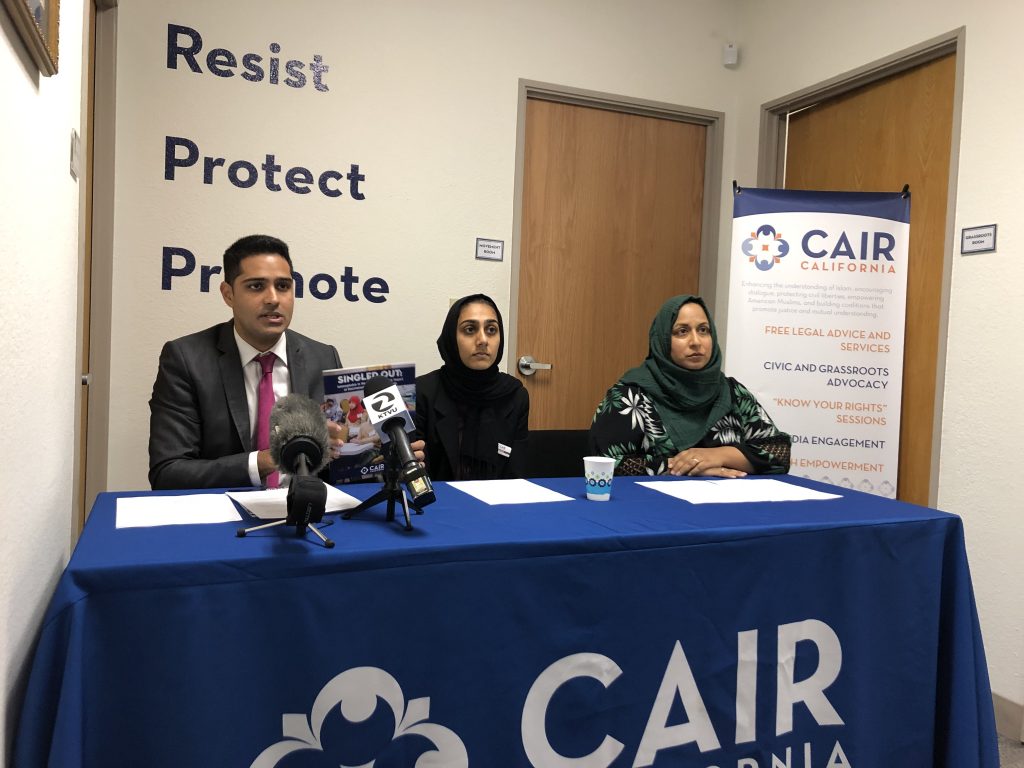A new report out this month sheds some light on what it means to be a Muslim youth in America and more specifically California.
It found that 40 percent of Muslim students had experienced bullying because they were Muslim. Also, 29 percent said they experienced high levels of offensive comments and other forms of bullying from teachers and administrators.
For parents of Muslim students, these numbers are scary.
“To me, when I hear that as a parent — I’ve got two kids — that means one out of two kids has a chance of being bullied in school simply for being Muslim,” said Eman Tai, who has a third grader and a sixth grader in the Dublin Unified School District. “That is too high a rate for us as parents to be able to feel comfortable sending our kids to school and not being worried about it. Not being concerned about the impact of that.”
Tai says while her district has been receptive to issues of cultural bias, it still exists.
“Would you say that to someone? You’re not that kind of Muslim; you’re not that terrorist kind of Muslim,” said Tai. “I feel like that puts a lot of pressure on a seven-year-old or an eight-year-old to be an advocate for behavior of people all over the world…I think that’s something, where that cultural sensitivity comes into play. It maybe comes from a place of ignorance rather than malice.”
The survey was conducted by the Council on American-Islamic Relations (CAIR). The report surveyed 1,500 Muslim students in California between the ages of 11 and 18. Of those surveyed, 217 of the students were from Santa Clara County.
This is the fourth time CAIR has conducted the survey since 2013 and the numbers have not gone down over the years. Ammad Rafiqi, one of the editors of the report, feels the current political climate is contributing to this feeling among students.
“We believe that the rates and the numbers that we see are a result of the hateful rhetoric that is funneled by the Trump administration, which has fueled an increase in hate speech, hate incidents and hate crimes across the nation but also in the state of California,” said Rafiqi.
While the numbers were not broken down by school district, Rafiqi says CAIR has worked with Santa Clara Unified School District (SCUSD) in the past and they were receptive when issues arose.
“I think that school districts in general are receptive, but it’s sort of a band aid after the injury,” said Rafiqi. “We have to reach out to them after an incident has happened and then we’re trying to work with them to see how can we be more proactive. Is there a policy in place [for] how you report bullying…but also how accessible are counselors and administrators in ensuring that a report of bullying is being taken seriously?”
“Santa Clara Unified School District’s programs address bullying in all forms, including gender, national origin, sexual orientation, ethnicity, and religion,” said SCUSD Public Information Officer Jennifer Dericco. “Our programs focus on prevention and building positive cultures through a system of Positive Behavioral Interventions and Supports (PBIS) in order to support all students in developing a caring climate where students feel safe, productive, and actively engaged in their education.”
Dericco says some of the schools within the district also use a program called Project Cornerstone, which is designed to help students recognize and stand up to bullying for themselves and for others.
Rafiqi knows that districts are trying, but he feels like more can be done.
“I think it would be helpful to have a proactive approach and that’s why we offer our expertise through school assemblies where we talk about bullying in general, but also as it affects LGBTQ and Muslim youth who have reported higher rates of mental health issues and psychosomatic issues and then the bullying in general.”
The report was released in October because October is National Bullying Prevention Month.
